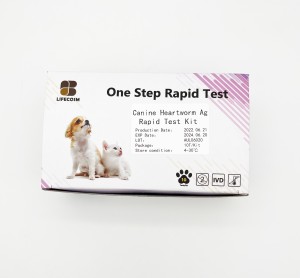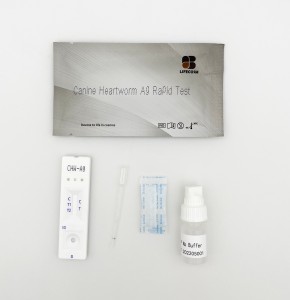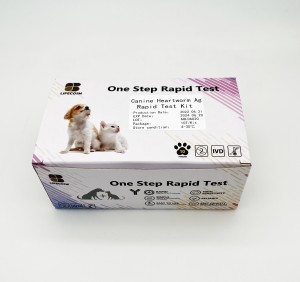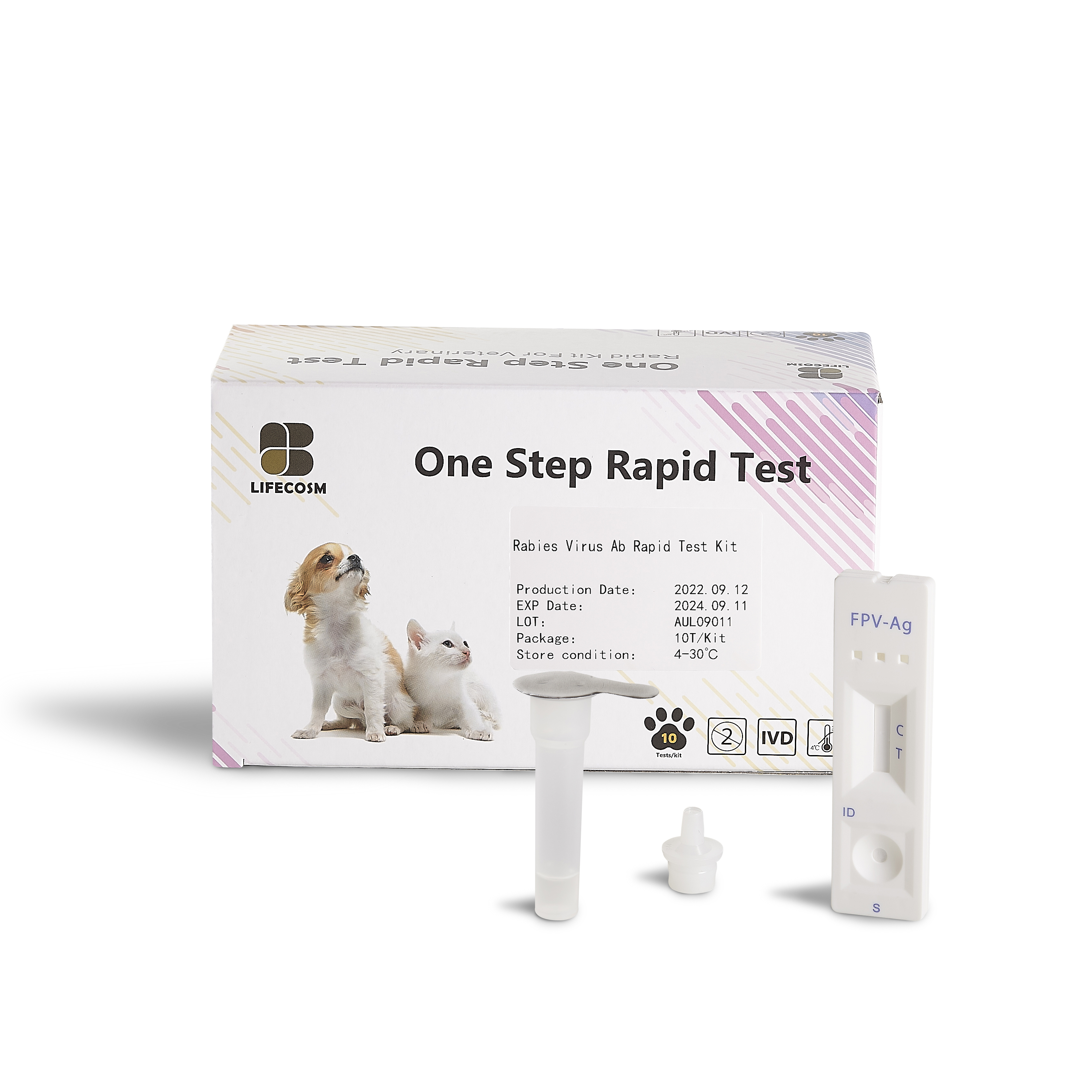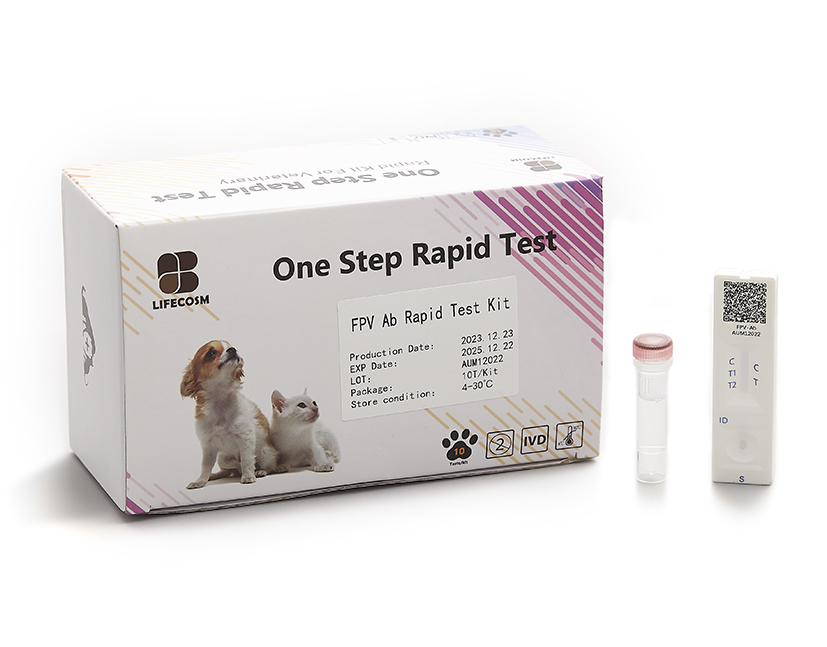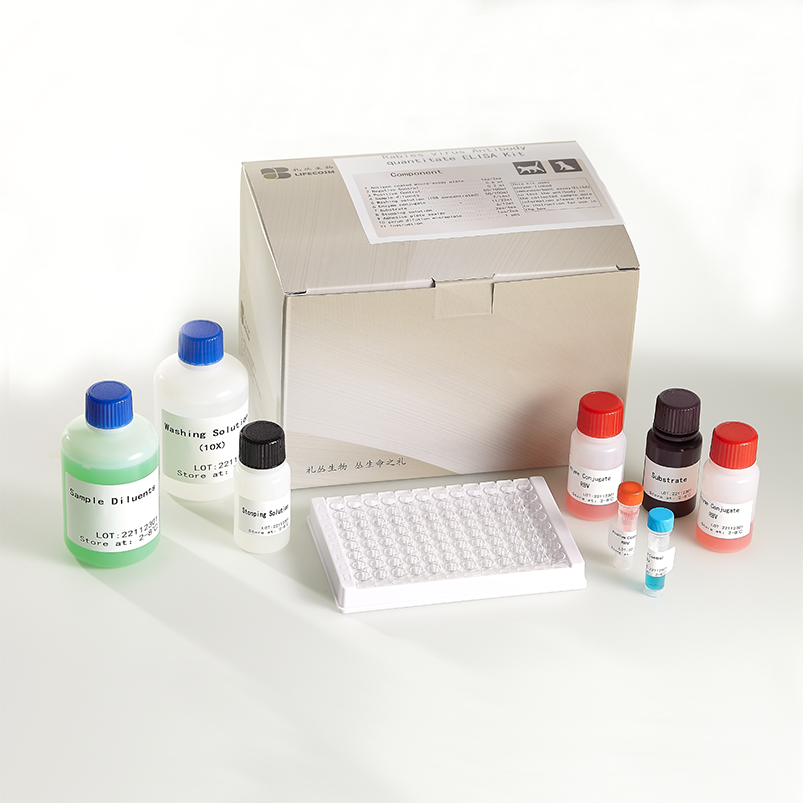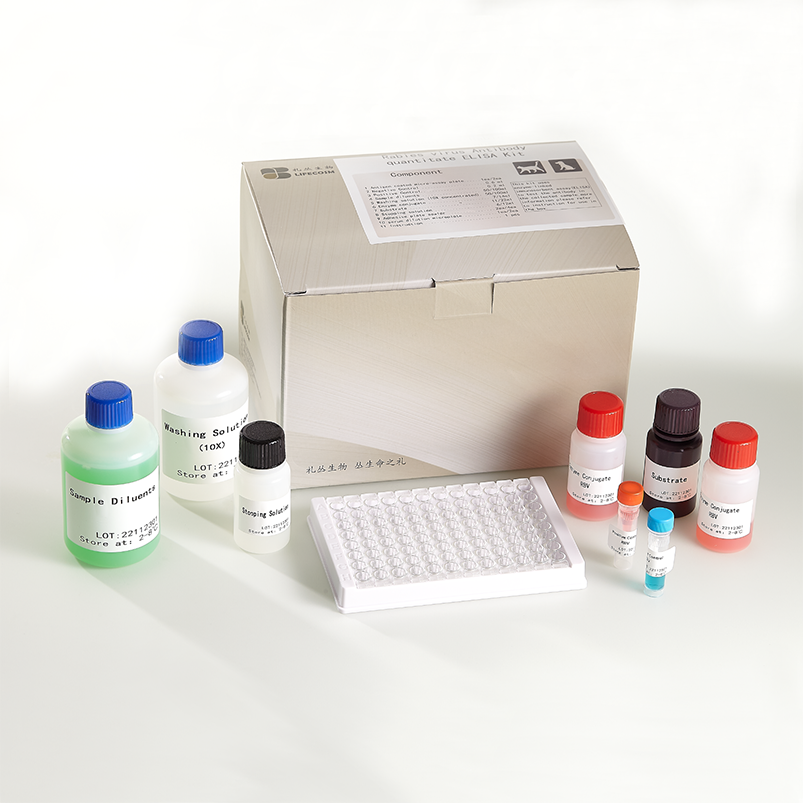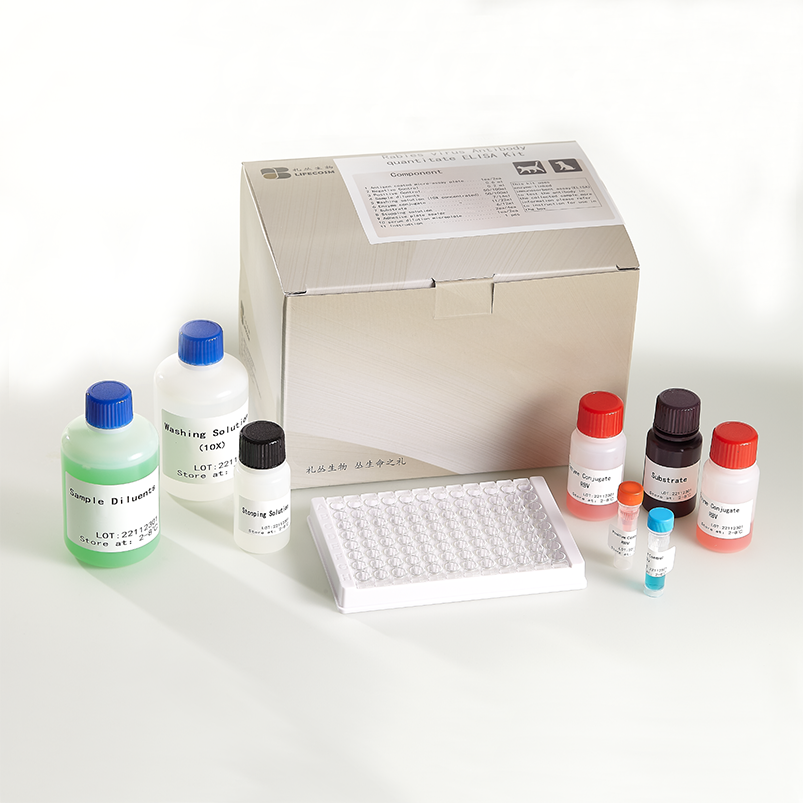
Products
Canine Heartworm Ag Test Kit
| Summary | Detection of specific antigens of canine heartworms
within 10 minutes |
| Principle | One-step immunochromatographic assay |
| Detection Targets | Dirofilaria immitis antigens |
| Sample | Canine Whole Blood, Plasma or Serum |
| Quantity | 1 box (kit) = 10 devices (Individual packing) |
|
Stability and Storage |
1) All reagents should be stored a Room Temperature (at 2 ~ 30℃) 2) 24 months after manufacturing.
|
Information
Adult heartworms grow several inches in length and reside in the pulmonary arteries where it can obtain enough nutrients. The heartworms inside the arteries trigger inflammation and form hematoma. The heart, then, should pump more often than before as the heartworms increase in number,blocking the arteries.
When infection deteriorates (over 25 heartworms exist in a 18 kg dog), the heartworms move into the right atrium, blocking the flow of blood.
When the number of heartworms reaches more than 50, they could occupy atriums and ventricles.
When infected with over 100 heartworms in the right part of the heart, the dog loses the function of the heart and eventually dies. This fatal phenomenon is called as “Caval Syndrom.”
Unlike other parasites, the heartworms lay small insects called as microfilaria.
Microfilaria in mosquito moves into a dog when the mosquito sucks blood from the dog. The heartworms that can survive in the host for 2 years die if they do not move into another host within that period. The parasites residing in a pregnant dog can infect its embryo.
Early examination of heartworms is very important in eliminating them.
Heartworms go through several steps such as L1, L2, L3 including the transmission stage through mosquito to become adult heartworms.
Serotypes
The Canine Heartworm Antigen Rapid Test Card uses immunochromatography technology to qualitatively detect heartworm antigen in canine serum, plasma, or whole blood. After the sample is added to the well, it is moved along the chromatography membrane with colloidal gold-labeled anti-HW monoclonal antibody. If the HW antigen is present in the sample, it binds to the antibody on the test line and appears burgundy. If the HW antigen is not present in the sample, no color reaction is produced.
Contents
| revolution canine |
| revolution pet med |
| detect test kit |
revolution pet


